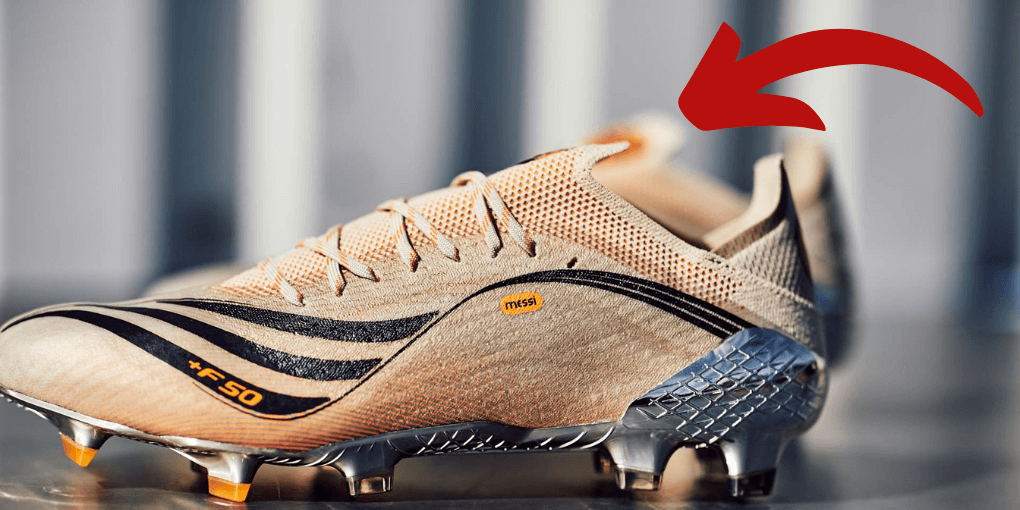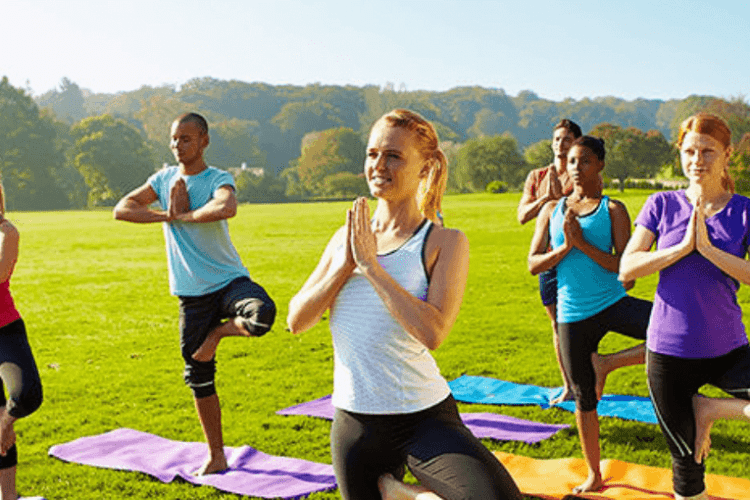Analysis of Soccer Cleat Material: Leather vs. Synthetic
Hey there, young champs! Have you ever wondered why soccer players wear different types of cleats? It’s not only about style; it’s about the material that can make or break your game.

I’m Reko A. Rahman, like you, a soccer lover with a passion for scoring goals and having fun on the field.
Did you know the world’s best players carefully choose cleat materials to enhance their performance?
Cristiano Ronaldo once said, “The right cleats can make you feel unstoppable on the field.”
So, soccer cleat material can be a big deal. Whether you’re using leather or synthetic materials it might have an impact on your game.
If you’re a soccer lover and want to make the right choice for your feet, join me on this exploration. We’re going to start an adventure into the fascinating world of soccer cleats. Let’s begin!
Importance of Understanding Soccer Cleat Material
“I always want more. Whether it’s a goal, or winning a game, I’m never satisfied. ” – Lionel Messi. So, if you’re also dedicated to your games and want to achieve more, you must choose the right gear for your games.
In soccer, what you wear on your feet affects your performance. Here are a few reasons why you need to understand soccer cleat material:
Better Performance on the Field
Did you know that players who wear cleats suitable for the field have a higher chance of scoring goals? If you choose the right material, it can help you run faster and be more lively during the game.
So, knowing what materials are good for playing soccer helps you pick the best one. This makes you better at the game.
Comfort Matters
8 out of 10 professional players say that comfortable cleats make a huge difference in their performance.
Soccer is all about moving fast and feeling good. So, your feet need to feel comfy while playing.
Cleat materials like leather and synthetics offer different levels of comfort and flexibility. Comfortable cleats keep the focus on the game and allow you to perform at your best.
Weather-Ready Cleats
Different cleat materials react differently to weather conditions. If you understand this, it’ll help you choose the right cleats. Whether it’s a sunny day or a rainy match, the right cleat can be your best buddy.
Durability for the Long Run
Soccer can be a demanding sport where your cleats need to endure wear and tear. Cleats go through a lot on the field—running, kicking, and sometimes sliding.
If you know which material is more durable, it will make your cleats last longer. It also ensures that you’re always ready for action.
Save Money
Cleats come in different price ranges. If you understand soccer cleat material well, you can choose the right one for you. It’ll provide good service and save you money in the long run.
Know About Leather Soccer Cleats
When it comes to soccer, the choice of cleats can greatly impact your game. One popular option is leather cleats. Let’s dive into what makes leather cleats special:
- Natural Feel and Comfort: Leather cleats give a cozy hug to your feet. These are made from animal hides and then processed to create flexible and soft materials. This natural material gives the cleats a comfortable and secure fit on your feet. It allows you to move with ease on the soccer field.
- Breathability: Leather cleats are known for their breathability. It allows air to circulate and keeps your feet cool during the game.
- Durable and Tough: Leather cleats are generally quite durable. If you take good care of them, they will usually last a long time. I can easily do kicking, running, and sliding by wearing them.
- Timeless Style: Leather cleats have a classic and stylish look. They bring a sense of tradition to the game. Famous players like Pele and Diego Maradona kicked their way to glory in stylish leather cleats.
So, if you’re a fan of that classic soccer style, leather cleats might be the perfect fit for you.
- Excellent Touch and Ball Control: Leather cleats are best for exceptional touch and ball control. The softness of the material allows players to feel the ball better. It gives them better control to dribble, shoot, or pass the ball.
So, if you think this leather meets your needs, lace up your cleats to conquer the soccer field with style and confidence.
Know About Synthetic Soccer Cleats
Did you know that some of the fastest players love synthetic cleats for their magic on the field?
This is one of the most popular ones among soccer enthusiasts. So, let’s explore the features that make synthetic cleats special for you:
- Light as Feathers: Synthetic cleats are like wearing feathers on your feet. These are super light and easy to move in. They are made from man-made materials like synthetic leather, mesh, or microfiber. It allows you to move easily on the field.
- Water-resistant: Synthetic cleats often have a water-resistant coating or construction. It helps keep your feet dry even in wet conditions. So, even if the field is wet, your synthetic cleats can provide a secure grip and maintain performance. There is also a chance for you to avoid slips and slides during the game.
- Cost-Effective: Synthetic cleats can be budget-friendly without compromising on quality. So, they are a great option for you if you want high-quality cleats without breaking the bank.
- Funky Designs and Colors: Like many other players, I also believe that the more colorful the cleats, the more goals I’ll score. For this, I often use synthetic cleats. These cleats come in various colors and cool designs. It’s like wearing a piece of art on your feet while scoring goals.
- Easy to Clean: Synthetic cleats are generally easy to clean. You can simply wipe off any dirt or mud with a damp cloth. It is convenient for young players who are always on the go. That’s why many young and rising soccer talents look for synthetic cleats.
Comparison Between Leather and Synthetic Soccer Cleat Material
A study from ResearchGate shows that soccer cleats affect how well you kick, move, and change direction on the field. So, you must choose the perfect cleats for your game.
I’ve used both synthetic and leather cleats. Now here, I’m doing a comparison between these two to help you choose the best one for you:
Comfort
Leather cleats are often praised for their softness. It can mold to your feet to provide a comfortable fit.
Synthetic cleats, on the other hand, are lightweight. It can offer you a snug fit to ensure flexibility and ease of movement.
Durability
Leather cleats are generally more durable and can resist rough playing conditions.
However, synthetic cleats are not as sturdy as leather cleats. Still, they offer good durability and are resistant to water and other elements.
Grip and Traction
Leather cleats provide better grip and traction, especially on grass or softer surfaces.
On the other hand, synthetic cleats have special patterns on the bottom for better grip on different fields.
Ball Control
Leather cleats are known for providing excellent touch and ball control due to their softness. It allows you to have a better feel when dribbling or passing.
On the contrary, synthetic cleats have a smoother surface. It can provide a cleaner, more striking area for more powerful shots.
So, both leather and synthetic cleats have their advantages. So, before you step on the field, consider your needs and choose the cleats that best suit your game.
Maintenance and Care Tips for Different Types of Soccer Cleats
Proper maintenance is essential to keep your soccer cleats in top shape, whether they are made of leather or synthetic material. Let’s explore some easy tips to help you take care of your cleats:
For Leather Cleats
- Cleaning: After each game or practice, you should remove any dirt or mud from your leather cleats. You can use a soft brush or a wet cloth to wipe them. Try to avoid using harsh chemicals, as they can damage the leather.
- Drying: Allow your leather cleats to air dry naturally after each use. Avoid placing them in direct sunlight or using artificial heat sources. This can cause the leather to crack or become hard.
- Conditioning: Occasional conditioning can be good for leather cleats. You can use a leather conditioner specifically designed for sports footwear. By doing this, you can keep the leather soft and flexible. So, you can follow the instructions provided with the conditioner for the best results.
For Synthetic Cleats
- Cleaning: Like leather cleats, you can gently brush off dirt or mud by using a soft brush or cloth. You can also use a mild soap and water solution to clean synthetic cleats. Avoid harsh cleaners that can damage the material.
- Drying: After cleaning, allow your synthetic cleats to air dry naturally. Avoid using heat or direct sunlight, as excessive heat can deform the synthetic material.
- Odor Prevention: To keep your synthetic cleats smelling fresh, you can sprinkle some baking soda inside them after each use. Baking soda helps absorb excess moisture and remove odors.
By following these easy-care tips, you can ensure your cleats stay in great condition for your next game.
Impact of the Soccer Cleat Material on Injury Prevention
A study by the National Institute of Health shows that soccer cleats can reduce the chance of injury.
The choice of cleat material can play a vital role in preventing injuries during the game. So, let’s take a closer look at it:
- Protective Powers of Leather: Leather cleats provide extra protection for your feet. They help reduce the risk of bruises and minor injuries to make the game safe for you. So, by wearing these cleats, you can get fewer injuries during a match.
- Synthetic’s Supportive Side: Synthetic cleats offer excellent support for your feet. They provide stability and reduce the chances of twisting your ankle. This stability also helps prevent slips and falls on uneven or slippery surfaces.
- Lightweight Defense: Both leather and synthetic cleats are lightweight. These help you move quickly on the field. Lighter cleats mean less strain on your legs and a lower risk of muscle injuries. So, whether you choose leather or synthetic cleats, you’ll experience less muscle strain during a game.
- Grip and Traction Magic: Cleats with good grip and traction prevent slipping and sliding. Both leather and synthetic materials play a role in ensuring a firm grip on your feet.
- Choosing Cleats for Different Surfaces: The type of surface you’re playing on matters. Leather and synthetic cleats offer different advantages on grass, turf, or hard surfaces. By picking the right cleats for the field, you can prevent injuries and ensure a safe game for you.
Conclusion
To conclude, this soccer cleat material analysis has provided us with some valuable insights. Both leather and synthetic have their advantages.
So, while choosing your cleats, you must consider your preferences and playing conditions. By picking the right soccer cleats, you can make a big difference in your game.
Whether you choose leather or synthetic cleats, it’s your time to shine on the field. So, it’s time to lace up, play with joy, and make each game a memorable soccer adventure.


